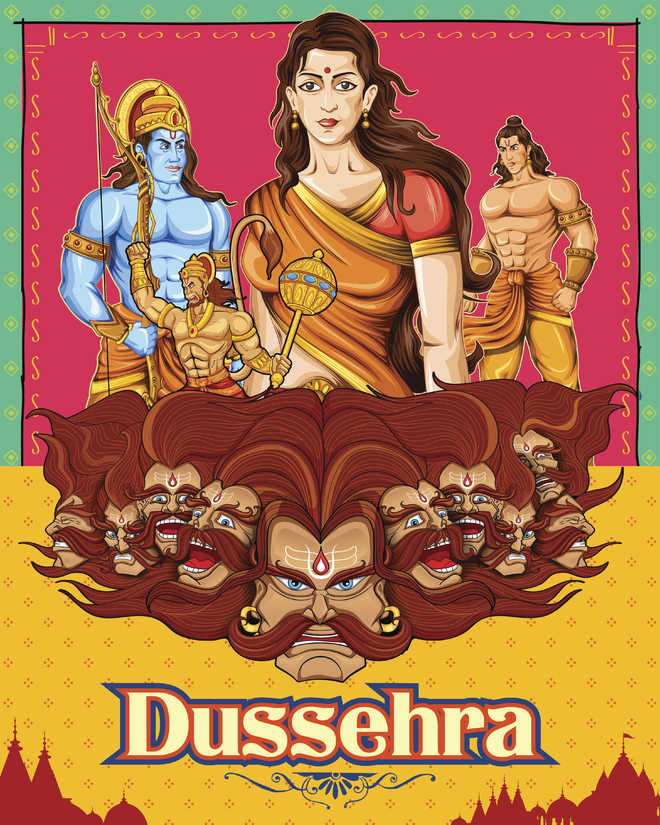Geetu Vaid
“India’s first literary popstar”, “India’s Tolkien”, “Paulo Coelho of the East”— this barrage of epithets for the author makes it tough to approach a book with little expectation. And if it happens to be the second book in the Rama Chandra series by “magician of Meluha” Amish Tripathi, then expectation and excitement are palpable.
Amish’s hyperlinking lends an independent flavour to this book. The ‘multi-linear story-telling technique’ that he has used lets him focus on each of the main characters, relate their stories from the beginning and then bring all threads together in later volumes to take the series to its crescendo. So, if Ram, Scion of Ikshvaku was all about Ram — his birth, life experiences and philosophy, then with Sita, Warrior of Mithila, Amish not only constructs the story from her perspective, but also introduces us to “his” Sita. As his story is more aligned to Valmiki’s Adbhuta Ramayana, the writer breaks the stereotyped image of Sita as a hapless and helpless woman. Amish’s Sita is not the demure, self effacing, self sacrificing, silent partner, but a volatile, quick, intelligent, diva who can crush skulls with her stick, kill with her perfect knife throw and has the confidence to be the Prime Minister and a key strategist in her kingdom.
However, this is not the first time that the character of Sita has been “re-presented”. From Volga to Devdutt Pattanaik, several writers have focused on Sita’s perspective, but Amish scores a point by his simultaneous demolishing of the established image and building of a fresh one for this epic character. He maintains the delicate balance of feminine and feminist traits in her. His Sita is not only the Vishnu designate but is also five years older than Ram. But this is not the only way in which Amish jolts the gender-related stereotypes deeply ingrained in our collective consciousness. He completely avoids giving elaborate descriptions of her physical form and figure. In fact, even her decision to marry Ram is shown to be based on practical and rational reasons and her interactions with Ram bring her forth as a woman aware of her feelings rather than an awe-struck damsel with romantic stars in her eyes. In what seems like a challenge to the patriarchal mores, he draws strong female characters like queen Sunaina, who is the de facto “King” of Mithila and Samichi, the chief of a male-dominated police force of Mithila. For a large part the narrative is an all-girls show wherein men are relegated backstage. Even Ram has a late entry towards the last part of the book. The author even steers clear of the woman vs woman machinations and court intrigues as the reason for exile of Ram and Sita. These subtle touches act like vents circulating freshness in the all-so familiar narrative of the Ramayana.
While the author has taken pains to build Sita as a strong character, he has also prepared the pitch for subsequent volumes by throwing in sufficient clues about the intrigues and surprises that may be there. The build-up to rivalry between Vishwamitra and Vashistha, extending the roles of Jatayu and Hanuman have been dealt with deftly.
Thus, what one has in the end is not just a mythological story retold, there is also a build-up to defining the philosophy of a perfect society and how the rulers should rule and the duties of citizens, the role of dharma and duty. Much of the meat in the narrative comes from the discussions on the importance of social system and mores, the balance between the feminine and masculine ways of life etc. Thus, Amish’s attempt at breaking the stereotypes is, in fact, connected to his endeavour to build new social constructs.
But in this strength lies a huge weakness of the narrative as one cannot but help draw parallels to recent events and situations. Much like the first book that had reference to the Nirbhaya rape case, this time there are references to ISIS and even Jallikattu. These, along with the description of Mumbadevi (present day Mumbai) and its islands and a huge city, or reference to Spanish bull fighting jolt one out of the 3400 BC India that he has constructed so painstakingly. Amish claims that this ancient world draws him in and the story writes itself or comes to him as he writes it, but the sprinkling of current events seems to belie this claim. Having a multi-layered platform wherein the ancient and the contemporary intertwine and intersect is a bit overwhelming here.
After the Shiva trilogy the first book of the Rama Chandra series was a bit placid. But with Sita, Amish seems to have redeemed himself to some extent, giving the flavour of Meluha magic. The visual web of words and the fast-paced narrative make it a good weekend read. Kudos to him for injecting soul, spirit as well as chutzpah in the character of Sita. And for those who missed the Scion of Ishvaku, this is as good a starting point to start their journey as one can always go back to the first book before the third one Raavan, Orphan of Aryavrata is released.
Unlock Exclusive Insights with The Tribune Premium
Take your experience further with Premium access.
Thought-provoking Opinions, Expert Analysis, In-depth Insights and other Member Only Benefits
Already a Member? Sign In Now











